





Carbamazepine
Application instruction:
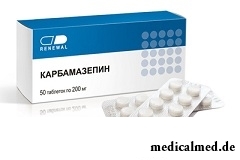 Carbamazepine – drug with psychotropic, antiepileptic action.
Carbamazepine – drug with psychotropic, antiepileptic action.
Form of release and structure
Carbamazepine is produced in the form of tablets (on 10, 15, 25 pieces in blister strip packagings, on 1-5 packagings in a cardboard pack; on 20, 30 pieces in blister strip packagings, on 1, 2, 5, 10 packagings in a cardboard pack; on 20, 30, 40, 50, 100 pieces in bank, after 1 bank in a cardboard pack).
Is a part of 1 tablet:
- Active agent: carbamazepine – 200 mg;
- Auxiliary components: talc – 3,1 mg, K30 povidone – 14,4 mg, colloid silicon dioxide (aerosil) – 0,96 mg, polysorbate of 80 - 1,6 mg, potato starch – 96,64 mg, magnesium stearate – 3,1 mg.
Indications to use
- Epilepsy (except sluggish or myoclonic attacks, absentias epileptica) – for the second time and initially generalized forms of attacks which are followed by toniko-clonic spasms, partial attacks with simple and difficult symptomatology, the mixed forms of attacks (monotherapy or in a combination with other drugs with anticonvulsant action);
- Polyuria and polydipsia at not diabetes mellitus, a pain syndrome at diabetic polyneuropathy, an epileptiform neuralgia at multiple sclerosis, an idiopathic epileptiform neuralgia, an alcoholic abstinence syndrome, idiopathic glossopalatine neuralgia, affective frustration;
- Faznoprotekayushchy affective disturbances, including schizoaffective disorders, maniac-depressive psychosis, etc. (prevention).
Contraindications
- Atrioventricular block;
- Disturbance of a marrowy hemopoiesis;
- The acute alternating porphyria (including instructions in the anamnesis);
- Concomitant use with monoamine oxidase inhibitors and for 14 days after their cancellation;
- Pregnancy and period of a lactation;
- Hypersensitivity to drug components, and also to similar to active agent medicines (tricyclic antidepressants) in the chemical relation.
Carbamazepine should be applied with care along with alcohol intake, to elderly patients, and also the patients with the expressed heart failure, a cultivation hyponatremia raised by the intraocular pressure, oppression of a marrowy hemopoiesis against the background of reception of medicines (in the anamnesis), a prostate hyperplasia, a liver failure, a chronic renal failure.
Route of administration and dosage
Carbamazepine is accepted inside, washing down with a small amount of liquid. A pill can be taken irrespective of meal.
At treatment of epilepsy, in cases when it is possible, drug is appointed in the form of monotherapy. Administration of drug is begun with a small daily dose which is gradually increased further to optimum.
If antiepileptic therapy is already carried out, Carbamazepine needs to be attached gradually (depending on indications, doses of the medicines applied at the same time can be adjusted).
The initial adult dose makes 100-200 mg 1-2 times a day. In need of it slowly increase before achievement of optimum medical effect (as a rule, up to 400 mg 2-3 times a day). The maximum daily dose – 1600-2000 mg.
To children appoint the following mode of dosing:
- Up to 5 years: an initial daily dose – 20-60 mg, every other day gradually increase a dose by 20-60 mg;
- Of 5 years: an initial daily dose – 100 mg, every week gradually increase a dose by 100 mg.
Maintenance dose – 10-20 mg/kg a day for 2-3 receptions (to provide exact dosing at children up to 5 years it is necessary to apply liquid peroral dosage forms of drug to children).
According to other indications Carbamazepine is appointed:
- Epileptiform neuralgia: in the first day – 200-400 mg a day; the dose is gradually increased before the termination of a pain syndrome, but it is no more than on 200 mg a day (an average daily dose – 400-800 mg), then reduce to a minimal effective dose;
- Pain syndrome of neurogenic genesis: in the first day – 100 mg 2 times a day; before easing of pains the dose is increased no more than by 200 mg a day (increase on 100 mg is possible each 12 hours). The supporting daily dose – 200-1200 mg (in stages);
- The diabetic neuropathy which is followed by pains: an average dose – 200 mg 2-4 times a day. For prevention of a recurrence of schizoaffective and affective psychoses – 600 mg a day in 3-4 receptions;
- Not diabetes mellitus: an average adult dose – 200 mg 2-3 times a day. To children Carbamazepine is appointed according to the body weight and age of the child;
- Syndrome of alcoholic abstinence: an average dose – 200 mg 3 times a day; at a heavy current during the first several days it is possible to increase a single dose to 400 mg. At the beginning of therapy at the heavy phenomena of abstinence simultaneous use with medicines with sedative and somnolent action is recommended (klometiazoly, chlordiazepoxide);
- Acute maniacal states and affective (bipolar) frustration: a daily dose – 400-1600 mg (on average drug is accepted on 400-600 mg in 2-3 receptions). At acute disease the dose is increased quickly, at a maintenance therapy of affective frustration – gradually (for portability improvement).
To the elderly patient and patients with hypersensitivity Carbamazepine in an initial dose 2 times a day usually appoint 100 mg.
Side effects
During use of Carbamazepine development of the following side effects is possible:
- Central nervous system: ataxy, dizziness, general weakness, drowsiness, oculomotor disturbances, headache, nystagmus, accommodation paresis, tics, tremor, orofatsialny dyskinesia, choreoathetoid frustration, peripheral neuritis, dysarthtia, paresthesias, paresis, muscular weakness;
- Cardiovascular system: decrease or increase in arterial pressure, disturbance of endocardiac conductivity, a collapse, bradycardia, arrhythmias, an atrioventricular block with faints, development or aggravation of congestive heart failure, an exacerbation of coronary heart disease (including increase or emergence of attacks of stenocardia), a thromboembolic syndrome, thrombophlebitis;
- Alimentary system: dryness in a mouth, vomiting, nausea, a lock or diarrhea, an abdominal pain, stomatitis, a glossitis, pancreatitis;
- Urinogenital system: a renal failure, intersticial nephrite, a renal failure (a hamaturia, an albuminuria, an oliguria, azotemia/increase in urea), an ischuria, the speeded-up urination, impotences/disorders of sexual function;
- Endocrine system and metabolism: a hyponatremia, increase in body weight, hypostases, increase in level of prolactin (it is possible along with development of a galactorrhoea and gynecomastia); L-thyroxine lowering of the level (free T4, TZ) and increase in level of thyritropic hormone (as a rule, is not followed by clinical manifestations), osteomalacy, disturbances of calcium-phosphorus exchange in a bone tissue (decrease in concentration of 25-IT-cholecalciferol and the ionized calcium form in a blood plasma), a gipertriglitseridemiya, a hypercholesterolemia;
- Musculoskeletal system: arthralgia, spasms, mialgiya;
- Liver: increase in activity gamma глутамилтрансферазы (as a rule, has no clinical value), increase in activity of an alkaline phosphatase and "hepatic" transaminases, hepatitis (granulematozny, the mixed, cholestatic or parenchymatous (hepatocellular) type), a liver failure;
- Bodies of a hemopoiesis: thrombocytopenia, a leukopenia, a leukocytosis, an eosinophilia, a lymphadenopathy, aplastic anemia, the acute alternating porphyria, an agranulocytosis, megaloblastichesky anemia, a true erythrocyte aplasia, hemolitic anemia, a reticulocytosis;
- Sense bodys: changes of perception of height of a sound, a phacoscotasmus, disturbances of flavoring feelings, conjunctivitis, hypo - or a hyperacusia;
- Mental sphere: concern, hallucinations, appetite loss, depression, agressive behavior, disorientation, excitement, activation of psychosis;
- Allergic reactions: volchanochnopodobny syndrome, exfoliative dermatitis, small tortoiseshell, Stephens-Johnson's syndrome, erythrosis, toxic epidermal necrolysis, photosensitivity, knotty and multiformny erythema. Multiorgan reactions of hypersensitivity of the slowed-down type with the vasculitis, fever, a lymphadenopathy, skin rashes, an eosinophilia reminding a lymphoma the signs, a leukopenia, arthralgias changed by indicators of function of a liver and a gepatosplenomegaliya are possible (the specified manifestations can meet in various combinations). Involvement and other bodies, for example, of kidneys, lungs, a myocardium, a pancreas, a large intestine is possible. Very seldom – aseptic meningitis with a myoclonus, a Quincke's disease, anaphylactic reaction, the reactions of hypersensitivity of lungs which are characterized by short wind, fever, a pneumonitis or pneumonia;
- Others: purpura, disturbances of a xanthopathy, perspiration, acne, alopecia.
Special instructions
Before use of Carbamazepine it is necessary to conduct examination: the general analysis of urine and blood (including calculation of reticulocytes, thrombocytes), determination of level of iron, concentration of urea and electrolytes in blood serum. Further these indicators need to be controlled weekly for the first month of treatment, and then – once a month.
At purpose of Carbamazepine patients with the increased intraocular pressure need periodically to control it.
Therapy should be stopped at development of the progressing leukopenia or leukopenia which is followed by clinical symptoms of an infectious disease (not progressing symptomless leukopenia of cancellation of Carbamazepine does not demand).
During therapy it is necessary to be careful at control of motor transport and performance of other potentially dangerous types of the works demanding the increased concentration of attention and bystry psychomotor reactions.
Medicinal interaction
At simultaneous use of Carbamazepine with some medicines there can be undesirable effects:
- CYP3A4 inhibitors: increase in concentration of carbamazepine in a blood plasma;
- Dextropropoxyphene, verapamil, фелодипин, diltiazem, вилоксазин, fluoxetine, флувоксамин, desipramine, Cimetidinum, даназол, acetazoleamide, niacinamide (only in high doses at adults); macroleads (джозамицин, erythromycin, кларитромицин, тролеандомицин); azoles (кетоконазол, итраконазол, флуконазол), лоратадин, терфенадин, the isoniazid, grapefruit juice, the propoxyhair dryer applied at therapy of HIV inhibitors of virus protease: increase in concentration of carbamazepine in a blood plasma;
- Felbamat, фенсуксимид, phenobarbital, Primidonum, Phenytoinum, метсуксимид, theophylline, Cisplatinum, rifampicin, doxorubicine, it is possible: вальпромид, clonazepam, valproic acid, окскарбазепин and vegetable drugs with the maintenance of a St. John's Wort of made a hole (Hypericum perforatum): decrease in concentration of carbamazepine in a blood plasma;
- Valproic acid and Primidonum: replacement of carbamazepine from communication with proteins of plasma and increase in concentration pharmacological an active metabolite (carbamazepine-10,11-epoxide);
- Izotretinoin: change of bioavailability and/or clearance of carbamazepine and carbamazepine-10,11-epoxide (control of concentration in a blood plasma is necessary);
- Klobazam, clonazepam, Primidonum, an Ethosuximidum, to alprazola, valproic acid, glucocorticosteroids (Prednisolonum, dexamethasone), a haloperidol, cyclosporine, doxycycline, methadone, peroral drugs with the content of progesterone and/or estrogen (it is necessary to pick up alternative methods of contraception), theophylline, peroral anticoagulants (фенпрокумон, warfarin, дикумарол), топирамат, ламотриджин, tricyclic antidepressants (Imipraminum, нортриптилин, amitriptyline, кломипрамин), фелбамат, clozapine, тиагабин, inhibitors of proteases which are applied at treatment of HIV infection (ритонавир, индинавир, саквинавир), окскарбазепин, итраконазол, blockers of calcium channels (group of digidropiridon, for example, фелодипин), midazolam, left thyroxine, a praziquantel, олазапин, рисперидон, трамадол, ципразидон: decrease in their concentration in plasma (reduction or even full leveling of their effects, correction of the applied doses can be required);
- Phenytoinum: increase or decrease in its level in a blood plasma;
- Mephenytoinum: increase (in rare instances) of its level in a blood plasma;
- Paracetamol: increase in risk of its toxic impact on a liver and decrease in a therapeutic effectiveness (paracetamol metabolism acceleration);
- Fenotiazin, Pimozidum, thioxanthenes, молиндон, haloperidol, Maprotilinum, clozapine and tricyclic antidepressants: strengthening of the oppressing action on the central nervous system and easing of anticonvulsant effect of carbamazepine;
- Diuretics (furosemide, hydrochlorothiazide): development of the hyponatremia which is followed by clinical manifestations;
- Not depolarizing muscle relaxants (pankuroniya): decrease in their effects;
- Ethanol: decrease in its portability;
- Indirect anticoagulants, hormonal contraceptive drugs, folic acid: metabolism acceleration;
- Means for the general anesthesia (энфлуран, a halothane, Ftorotanum): acceleration of metabolism with increase in risk of development of gepatoksichny effects;
- Metoksifluran: strengthening of formation of nefrotoksichny metabolites;
- Isoniazid: strengthening of a hepatotoxic action.
Terms and storage conditions
To store in protected from light, the place, dry, unavailable to children, at a temperature up to 25 °C.
Period of validity – 2 years.
Except people, only one living being on the planet Earth – dogs suffers from prostatitis. Here really our most loyal friends.
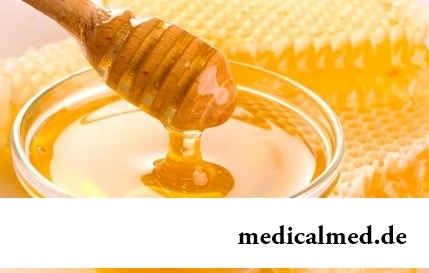
About 20% of the population of our planet have a hypertension (permanent increase in arterial pressure). This disease negatively narrations...
Section: Articles about health
The majority of gynecologic diseases prove three main signs, each of which speaks about need of a visit to the gynecologist. Certainly, it is possible to establish the exact diagnosis only after inspection, but on the basis of some signs it is possible пр...
Section: Articles about health
Diseases of joints often begin imperceptibly for the person. The first stages of destruction of the cartilaginous tissue providing soft and free sliding of heads of bones in joint bags proceed slowly and absolutely without serious consequences. Especially unpleasantly for the fact that this process is not connected with advanced age: degradation of joint surfaces is, as a rule, noticeable after 30 years. It means that practically each able-bodied person at any time can face sad results...
Section: Articles about health
Life of the modern woman is very difficult. Opportunities to realize itself are wide: it not only education and career, but also most differently...
Section: Articles about health
The body of the person almost for 60% consists of water. It is so important for normal functioning of an organism that loss of only one and a half percent of liquid already leads to the most unpleasant effects. The problems connected with deficit of water can overtake and...
Section: Articles about health
Herpes simplex of the first type (the infectious disease which is shown periodic bubble rashes on lips is called) – one of the most widespread illnesses. Statistically, only 5% of inhabitants of our planet are unreceptive to its activator, and the reasons of this feature are still not found out. Other people are virus carriers....
Section: Articles about health
The medicine promptly develops, and the fact that else quite recently it seemed by miracle can now. We are not surprised any more to the fact that sport...
Section: Articles about health
Bees – really unique beings. Practically all products of their life activity are used by the person. Since the most ancient times medicinal properties of honey and other substances received in the course of beekeeping are known. The fact that all these пр is especially significant...
Section: Articles about health
Summer in the heat. Many are going to spend vacation abroad. Travelers the tender seas, rest on beaches wait, for sightseeing, campaigns on natural and cultural reserves. But, unfortunately, on vacation also problems with health can wait for us. On a foreign trip it is possible to face also diseases which not only will spoil long-awaited issue, but also will force to be treated within long months after its termination. To be insured completely from troubles of it a sort...
Section: Articles about health
The fatigue, sleep debt, disturbances of food, bad mood, vagaries of the weather – all these circumstances badly are reflected in our vn...
Section: Articles about health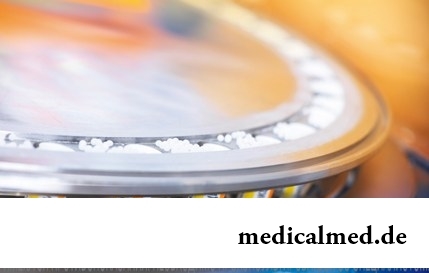
For the help to doctors in the choice of optimal solutions for treatment of various diseases the Cochrane scientific organization (Cochrane) conducts joint researches with representatives of scientific community around the world. The analysis of a series became carried out by one of the last methanolyses...
Section: Articles about health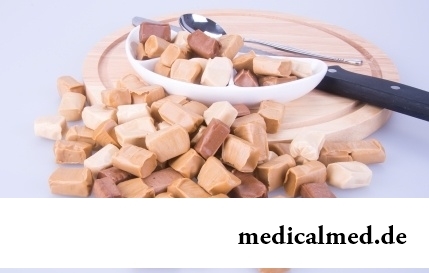
Food with the increased content of sugar is attractive to most of people - it is scientifically confirmed fact. Business here not in intemperance or dissoluteness: the sweet food is associated since childhood with feeling of rest and safety which tests the kid when it absorbs maternal milk. Besides, getting into a human body, sugar strengthens production of "happiness hormones" which all of us so need. And still life of sweet teeth seldom happens cloudless: their too big loss...
Section: Articles about health
Very often as a source of the infection which caused a disease serves our house - the place which a priori has to be safe. However...
Section: Articles about health
Life of the modern child is extremely active and difficult. Information strain which is experienced by the school student and did not dream pupils of last times. Careful parents, wishing well to the children, will organize a set of additional classes in circles, sports...
Section: Articles about health
According to doctors, more than a half of men of 25-50 years suffer from frustration of the urinogenital sphere, but the minority sees a doctor from them. And in vain - even the insignificant discomfort in the field of generative organs can serve as a symptom of an illness fraught with grave consequences for health. So - after 40 years - it is easy for most widespread disease of the sexual sphere of men to pass the first symptoms of prostatitis (weight in the bottom of a stomach, decrease in a libido), having written off for overfatigue and fatigue. Let's consider...
Section: Articles about health
Radiological methods of a research are applied in medicine more than hundred years, and thanks to them millions of lives were saved. In m...
Section: Articles about health
Practice of use of table salt in the therapeutic purposes contains not one century. Applications which do by means of the fabric impregnated with saline solution are considered especially effective. They possess antibacterial and antiinflammatory эффек...
Section: Articles about health
High temperature - a frequent symptom of such widespread diseases as a SARS, quinsy, pneumonia, etc. To reduce heat, having facilitated a condition of the patient, doctors recommend to accept antipyretics, however their use is not always possible. Too frequent use of these drugs can lead to allergic reactions, and also overdose, causing poisoning. It happens also that there are no antipyretics simply in the house. In these situations it is pertinent to use it...
Section: Articles about health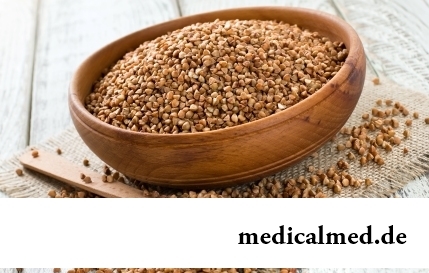
History of cultivation of a buckwheat contains more than five thousand years. Grain which is received from this plant is used for пригото...
Section: Articles about health
Statistically cystitis 25-30% of women up to 40 years have. With age this indicator raises, besides many do not get to statistics because do not see a doctor. The most sad that after the regular visits to doctors, long reception of antibiotics...
Section: Articles about health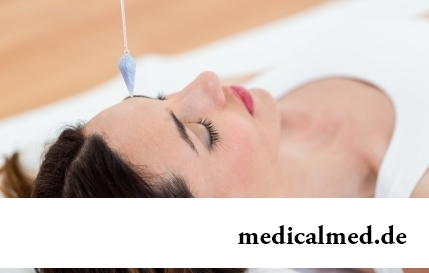
Practice of hypnotic impact on consciousness of the person contains about two millennia. During this time scientists managed to learn a lot of things about a phenomenon of hypnosis and learned to facilitate a condition of the patients having heavy illnesses with its help....
Section: Articles about health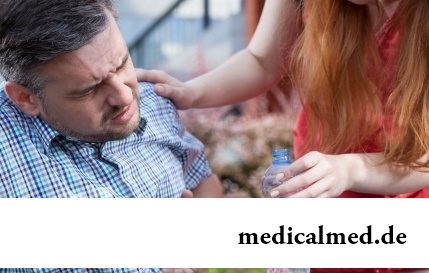
Each of us faces from time to time that other people need the immediate help. We react to it on-raznomu:...
Section: Articles about health
(Xerostomia) many people consider feeling of a xerostomia small and easily removable inconvenience. This delusion: the symptom can demonstrate existence of serious diseases. It is worth to remember also that saliva performs important functions...
Section: Articles about health
Dark circles (bruises) under eyes – a shortcoming with most of which often fight against the help of cosmetics (proofreaders, saloon procedures and so forth), eliminating only its visibility. However, according to doctors, skin around eyes – the indicator of many disturbances in an organism. To reveal them at early stages, without having disguised bruise, and having addressed its reasons – a task of each person who is regularly finding under with own eyes dark stains. Early detection and elimination of the disease lying in wasps...
Section: Articles about health
Ability of an organism to resist to adverse environmental factors (to impact of temperature drops, humidity and pressure...
Section: Articles about health
Helminthosis is one of the most widespread diseases. Statistically, any species of helminths infected every third inhabitant of the planet. Most of specialists even consider these data strongly underestimated: some uninvited "cohabitants" of N...
Section: Articles about health
On health of the person physicians know about salutary action of animals long ago. About 7 thousand years ago great Hippocrates recommended to the patients riding walks for strengthening of a nervous system and increase in vitality....
Section: Articles about health
